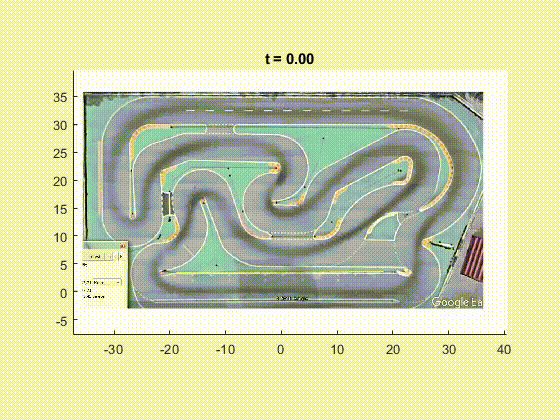1:10 scale pro stock remote car racing
Mustafa Alp from the Polytechnic University of Milan sent us a great video of his implementation with the OpenOCL toolbox.

(Image courtesy of Mustafa Alp)
Here are some details on the implementation:
- The vehicle model resembles a car of the 1:10 scale pro stock division remote controlled racing.
- The track length is 337 meters.
- The simulated laptime of 22.08 seconds is close to the laptime that is achieved in real racing (see video below).
- The track is modelled in curvilinear coordinates and discretized by 815 discretization points.
- The solution time is about 5 minutes with around 300-500 iterations.
- The torque curve of the motor is experimentally determined (motor with up to 25000 rpm).
- Aerodynamic downforce and drag coefficients, as well as centres of pressures are from wind tunnel experiments.
- Mass, center of gravity position, mass moment of inertia, drivetrain inertia, and suspension&steering geometries are from CAD drawings.
- Suspension stiffness and damping values, as well as gear differential tension are identified with the help of special measurement devices developed for the project.
- It uses a semi-empirical tyre model with vertical load sensitivity, and combined (lateral and longitudinal) slip effects. For the parameters of the tyre model, identification is performed through processing the telemetry data and mathematical model of the car together.
And here you can see them racing on the same track:
Let us know if you have something to share at jonas [at] openocl.org!
